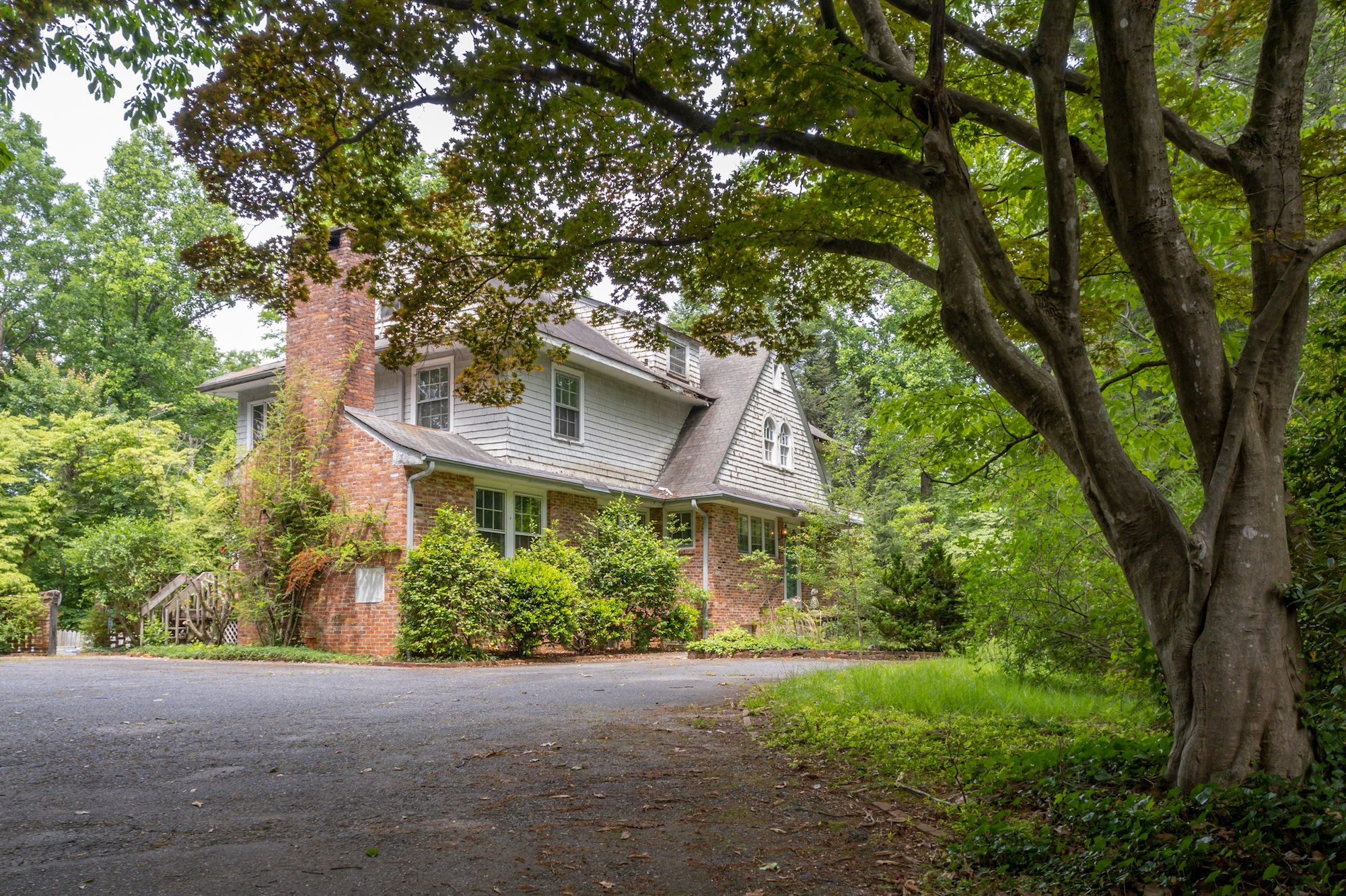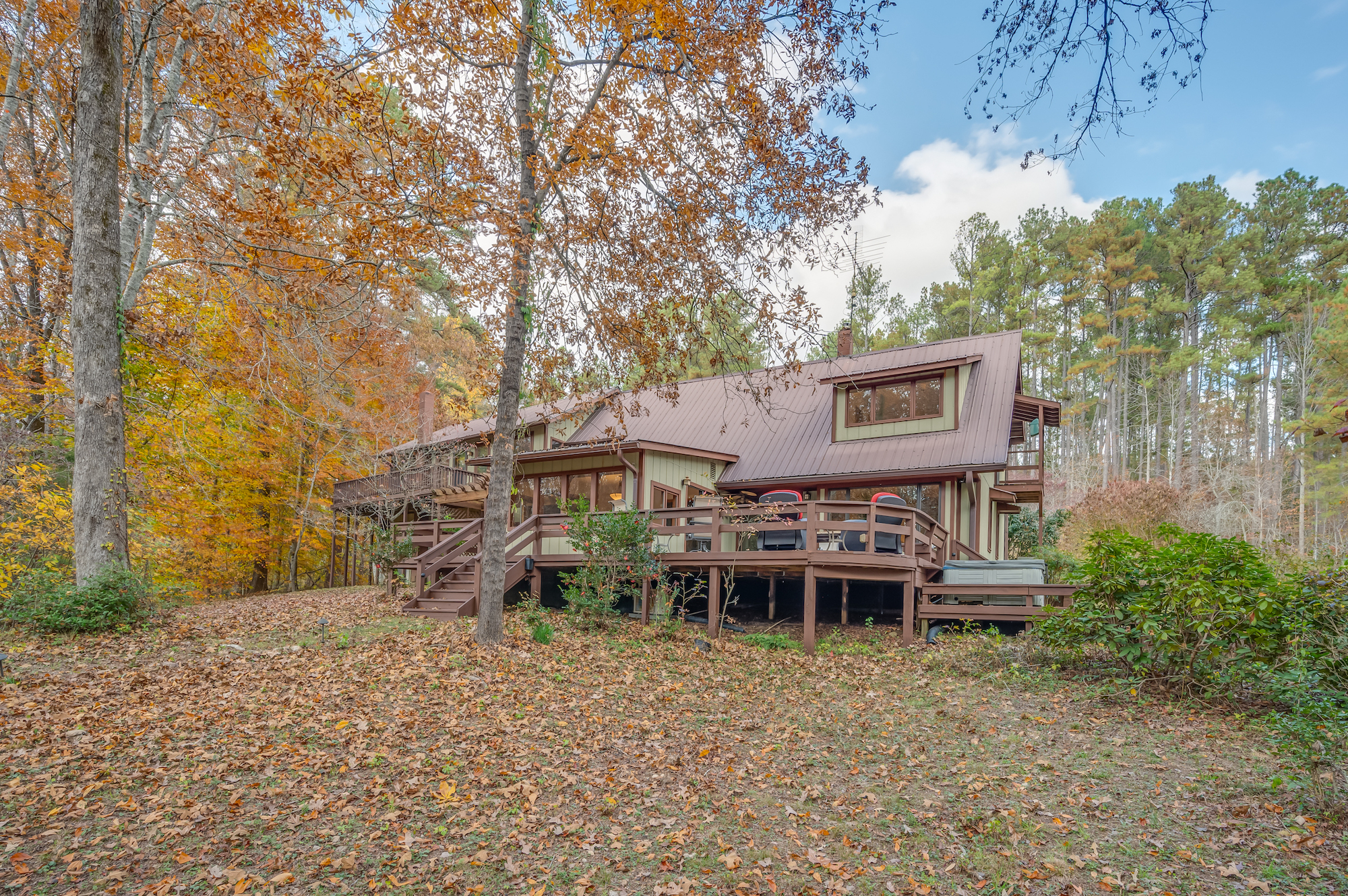Landrum
Landrum, South Carolina is located in upper Spartanburg County at the North & South Carolina border. Landrum has had a long history with neighboring Tryon in regards to equestrian activities and football games. Many are drawn to this historic small town for it’s great shopping and dining.
Lake Lanier is only minutes from downtown Landrum and offers wonderful family recreational opportunities. Lake Lanier has a Landrum mailing address, the water rights belong to the town of Tryon, however, it is physically located in Greenville County.
Some Historic Places
Four Columns Farm – Built in the late century upon the ruins of the pre-revolutionary outpost known as Earl’s Fort. On the National Register of Historic Places. Hwy 14 at I-26, Landrum
Campbell’s Covered Bridge – Built in the 1800’s. Hwy 14 to 414. Follow signs. Gowensville
———————————————————————————————————————–Some History about Landrum, SC – J. W. Lawrance – April 15, 1998
A small town on the state line next to Tryon, NC and considered to be part of the three towns making up our triangle.
Inman, Landrum, Tryon, and Saluda share one thing in common. The quartet, of the same age, were sired by a railroad.
Long before the Civil War, an effort, spawned in Charleston, was made to connect Charleston, SC with the Ohio River by rail. The goal was to divert midwest traffic and trade from the Mississippi River. By piecemeal the rail reached Spartanburg in 1857.
Then the War came.
By the end of the two decades following the war, the South’s economy had recovered sufficiently to revive railroad building fever. Colonel William Coleman, New Orleans to the Atlantic and Charleston by a Captain Charles Pearson laid out a route from downtown Spartanburg to Asheville, via the Mills Gap Road (Hwy 9), through Polk, Henderson and Buncombe Counties. The route left Mills Gap Road near present day Beulah Baptist Church and went into Columbus via the present Peniel Road. From Columbus, the route was surveyed out so a to climb Skyuka Mountain into Howard Gap, and on across the Continental Divide into the village of Hendersonville.
All along the route the Rev. John G. Landrum and others of a civic mind, urged local people to buy stock in the new enterprise and bonds of the corporation. Spartanburg and Union Counties bought $200,000 in bonds respectively. Polk County was asked to buy $40,000 in bonds.
Some of the Polk County people were opposed to the bond issue. A group claimed the cars would bring bar rooms and other corruption’s to Columbus, and that the cars would be noisy and running on Sundays. In a summer election the bond issue failed. Opposition to the railroad led Polk County farmers to refuse right of way. This fever spread down into Spartanburg County, well below New Prospect.
Railroad directors asked Captain Pearson to find another route with damned little as possible going through Polk County. The Captain did find another route, coming up the New Cut Road from Spartanburg to Gowensville. the clever engineer was unable to find a feasible route from Gowensville to Howard Gap that would be compatible with the railroad’s budget. The project seemed doomed, but Pearson kept on trying.
He found a ridge, broke only by the South Pacolet River valley running from Spartanburg to The Block House, a distance of 23 miles. By sheer cleverness, he worked out a route from the Block House up the North Pacolet River valley, climbing the side of Melrose and Warrior Mountains, through Paces Gap, and across the Green River, into Henderson County. He later worked out a route on into Asheville.
Each of the four towns were established as construction progressed along the route.
The Earl’s and the Landrum’s, anxious to see the railroad built on the third or last route, offered right of way, and four acres additional for a station to be built at the intersection of the railroad and the Salem, Statesville, Rutherfordton and Greenville Stage and Mail road. When the offer was accepted by the directors, the Landrum’s and the Earl’s employed William C. Camp, a noted land surveyor, to lay out some lots and streets. By an agreement between the railroad and the Landrum’s, a site for a station was selected approximately for a quarter mile from the actual intersection. this avoided digging a well to supply water for the station agent at the depot. Two hollows ran right upto the right of way, and each had a bold spring.
Construction of the road beyond Landrum was stymied over a year and ahalf while a crew of 400 workmen cut through a rib of North America’s hardest granite at the foot of Bird Mountain. Railroad officials decided to start train operations from Spartanburg to Landrum Station.
The age old custom of good will and everyone ride free the first day of operation was carefully observed by the new Asheville and Spartanburg Railroad. Although work trains had been plying the line, bringing up supplies and materials, officials set June 12, 1877 for the first passenger train service to begin. The train, loaded with free-loaders and speculators and their wives or lady friends, arrived by mid-morning. A big barbecue was topped off by a political speaking and an auction sale of building lots. Mr. Camp had laid out 47 half-acre lots. The highest priced lot sold that day sold for $39.00. Today it is occupied by the News Leader, and Pat Chesnut’s office and parcel shipping center.
C. M. Landrum had opened a tore a very short time before the land sale.
In an affray in the afternoon just prior to the trains departure for Spartanburg, Deputy Marshal James Ledford was wounded. He died aboard the train before it reached Spartanburg.
A church was established shortly after 1800 and bore the name of Wolfe Creek Baptist Church, because it was located beside a bold stream of that name. Through the years the church’s house of worship enjoyed several locations. Finally, on Sunday, April 29, 1855, a third building was dedicated. The frame structure was located about half a mile from the second building and sat in a grove of trees beside the Rutherford – Greenville Road. Some of the oak trees that grew near the building are still standing, and are now a part of Landrum Cemetery.
The church grew, and after the railroad came, the growth seemed to double. On Saturday, June 21, 1890 the congregation decided to build a church nearer to the railroad. A new site, one of the original lots laid out by William C. Camp and belonging to Miss Nannie Landrum, was exchanged for a portion of the old church property, the remainder to be left for a cemetery and school.
The first phase of the present church was begun in 1925. The name was changed to Landrum First Baptist Church April 26, 1926.
During the construction of Interstate 26 which traversed the site of the first church on Wolfe Creek, a marker indicating the site was temporarily set on the present church grounds. Upon completion of the freeway the marker was located near an intersection on property of Mrs. J. J. Munns. That location, near the entrance to Earle’s Fort subdivision, can easily be seen from the Rutherford Road (SC S-42-128).
The Rev. Lorenzo Dow, evangelist for the Methodist Episcopal Church, South, was stationed in Spartanburg during the building of the Asheville and Spartanburg Railroad. When he heard of some 400 laborers assembled at the base of Bird Mountain, he came to the work camp to preach. A brush arbor was constructed. The rough and tumble construction laborers were not interested in Dow’s preaching. However, attending church services were the only acceptable social activity for the local residents. The churches of the area offered worship services only once or twice a month. When Dow began to preach daily, settlers from miles around came to hear the noted speaker and to socialize.
The series of preaching netted some 20 converts, who were organized into a Methodist Church.
Purchasers of the lots auctioned the day of the first train’s arrival had begun building houses. P. P. Earle have two lots on the Howard Gap Road for a church building site. The Landrum congregation became a part of the Gowansville Circuit, and a frame church was built.
This structure served the congregation until the present brick structure was completed in 1923. This was Landrum’s first brick church. Two additions have been made, a complex of classrooms and a social hall were added following World War II. A family Life Center was completed in 1996.
In the early 1960’s the congregation purchased 46 acres of the Foster Estate. Reserving nearly four acres for a new church site, the remainder was developed into a subdivision and named Wesley Heights. That church site has not been built upon as of the spring of 1998.
The church, at first, shared a minister with six other churches on the Gowensville Circuit. Shortly after the coming of the railroad, the post office at Gowensville was closed. The circuit’s parsonage was moved to Campobello and the circuit name changed to Campobello.
During the first half of the twentieth century churches of the circuit were reassigned, leaving only Campobello and Landrum congregations. In the 1960’s the Landrum church was made a station, with a full-time minister.
Presbyterians were the first settlers in the area and built Nazareth, the first church in upper Spartanburg County. But it was not until 1916 that a Presbyterian congregation was organized in Landrum.
Landrum Methodists congregation were sharing a minister with the Campobello church, and “had vacant Sundays with no preaching.” The Presbyterians were invited to meet in the Methodist Church, and have preaching on those vacant Sundays. The system worked amicably until the Presbyterians were able to build a frame structure on the old Columbus Road, later called Shamrock Avenue.
In the 1960’s the congregation purchased a house and lot at the corner of Rutherford and Lee Street’s. The house was sold to Bobby Settle and moved to a nearby site. An attractive brick Sunday School building was erected immediately. Then a manse. Only a few years later a beautiful brick church was built.
The owners of Shamrock Damask Mill built a small frame structure across the street from the mill office to serve the employees as an union church. From this congregation several area churches were formed. The structure, still standing, is currently used as a warehouse. Histories of Landrum Pentecostal Holiness Church, Southside Baptist Church, Calvary Baptist Church, Landrum Free Will Baptist Church, Landrum Church of God of Prophecy, New Hope Baptist Church, Landrum Springs Baptist Church, Philadelphia Presbyterian Church, St. Luke’s Baptist Church, and Star Bethel Church are not available at the writing of this sketch.
Landrum began a rapid growth, once the station was established on the railroad. Its several stores quickly made the little village a center of trade for the increasing number of farmsteads in Upper Spartanburg County, Northeast Greenville County, and a goodly portion of Polk County.
On Thursday, September 2, 1880, the post office at Earlesville was moved to the Landrum Station and the name shortened to Landrum. Edward N. Hoyt was postmaster before and after the move.
The village was incorporated December 24, 1884, with a half-mile radius centered at the depot. Landrum was re-chartered September 10, 1897, with a mile radius centered at the Rutherford Street crossing of the Asheville and Spartanburg Railroad. Subsequent annexation has changed the corporate boundary into an irregular pattern. Officials of the 1897 incorporation included W. T. Daniel, Independent (mayor), J. S. Carpenter, T. D. Earle, J. J. Lambright and D. F. Ezell were named wardens (councilmen). W. T. Daniel was the first depot agent, and served many years.
During World War I soldiers of Camp Wadsworth, in Spartanburg, did their artillery training on Hogback Mountain. The troops came by train to Landrum and marched through mud to the mountain training area. Many of the me were welcomed into Landrum churches and homes, especially at Thanksgiving and Christmas.
Electricity was brought to Landrum during the War. The first telephone appeared in Landrum in 1902.
One of the landmarks in the history of Landrum was the presence of Landrum Academy, a boarding high school for boys and girls. The buildings and grounds were abandoned when the school was moved to Grove, SC (present day Lyman), in the days surrounding World War I.
By an overwhelming vote, the citizens of Landrum approved a bond issue and built a water system in 1925.
Extensive farming, with cotton planted up to the foot of the mountains, textiles and hosiery, and other light manufacturing stimulated growth in Landrum until the Great Depression struck in 1930.
Still in existence, after a series of name and ownership changes, The Mutual Bank survived wars, droughts, low cotton prices, and was the only bank in Spartanburg County to survive the Great Depression. Today, it is a part of the Wachovia system.
Landrum’s first high school graduated six seniors in 1916. The third high school building is now home to some 250 to 300 students, and serves the upper portion of Spartanburg County’s District One.
Today, the wilderness surrounding one lone homestead in 1877 is Landrum, home to large industrial plants producing elastic, door hinges, mail boxes, world renown woven carpet, paper folding boxes, commercial printing and publishing, and a host of small products, and nearly 3,000 people.
For more information on the charming town on Landrum, visit:









